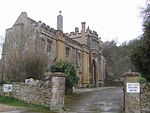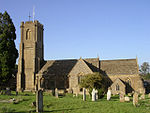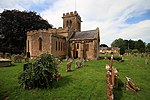Montacute House is a late Elizabethan mansion with a garden in Montacute, South Somerset, England. An example of English architecture during a period that was moving from the medieval Gothic to the more classic inspired Renaissance style. Montacute is one of few prodigy houses to survive almost unchanged from the Elizabethan era, the house has been designated as a Grade I listed building. It was visited by 125,442 people in 2013.Designed by an unknown architect, possibly the mason William Arnold, the three-storey mansion, constructed of the local Ham Hill stone, was built in about 1598 for Sir Edward Phelips, a lawyer and politician who was Speaker of the House of Commons from 1604 until 1611, and subsequently Master of the Rolls from 1611 until his death in 1614. He was the prosecutor in the trial of the Gunpowder Plotters.Sir Edward Phelips' descendants occupied the house until the early 20th century. For a brief period, the house was let to tenants, one of whom was Lord Curzon, who lived at the house with his mistress, the novelist Elinor Glyn. In 1931, it was acquired by the National Trust.
The house is maintained by the National Trust. Its Long Gallery, the longest in England, serves as an outpost of the National Portrait Gallery displaying a range of historical portraits.
Montacute and its gardens have been a filming location for several films and a setting for television costume dramas and literary adaptations.











